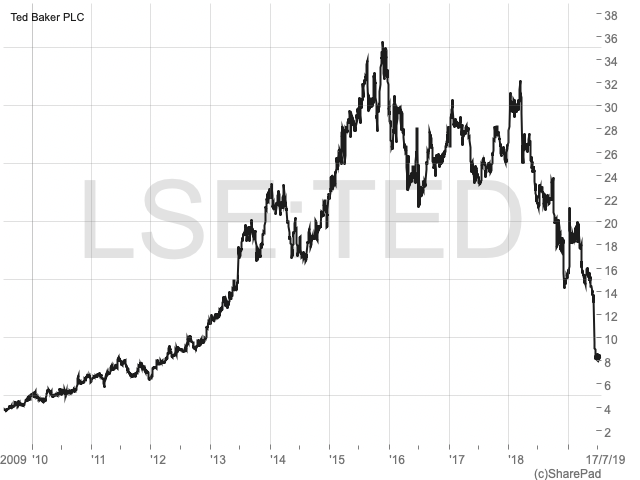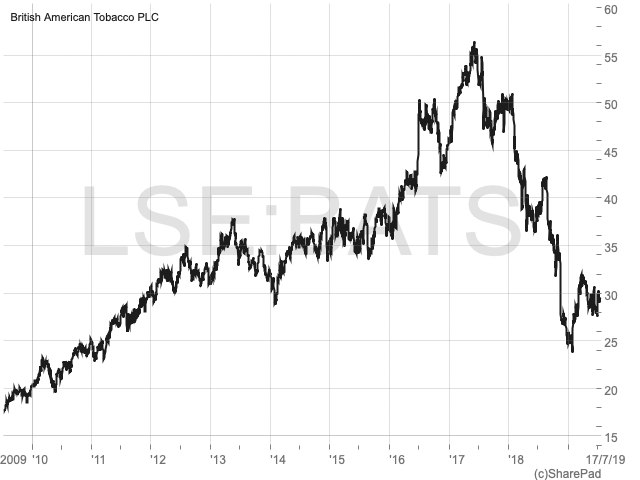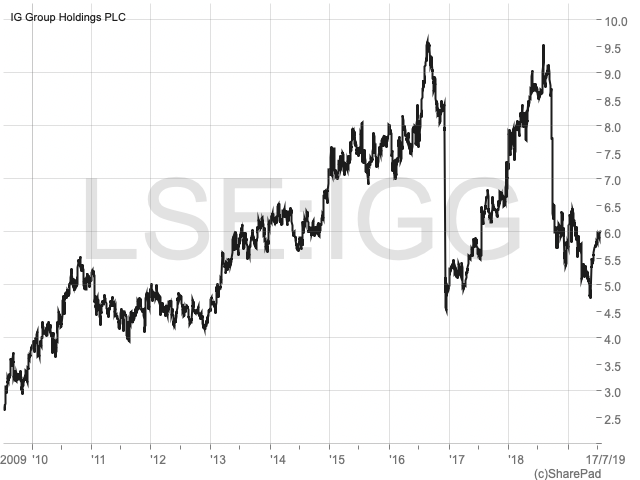Three high-yield ‘bargains’

John Kingham looks at three companies in his portfolio that have yields of over 7%. Is ‘Mr Market’ right to be so pessimistic about these three ‘high-yielders’?
Sometimes companies can do nothing wrong. Every year their revenues, profits and dividends go up, and every trading update beats the market’s expectations. The share price rises in an almost straight line for years on end and investors are ecstatic.
| First seen in Master Investor Magazine
Never miss an issue of Master Investor Magazine – sign-up now for free! |
But this fairy-tale scenario almost never lasts. Either the company makes a mistake; some external factor such as the economic cycle or an aggressive competitor undermines the company’s performance; or the share price starts to fall when a small number of investors decide to take profits. At this point, a significant number of investors start to get nervous, so they sell some shares. That pushes down the share price, which makes them more nervous, so they sell more shares. In a relatively short period of time the share price collapses as investor sentiment turns 180 degrees from adoration to repulsion.
As the years tick by I’ve seen this over and over again. Sometimes Mr Market is right and the company heads into long-term decline, but sometimes he’s wrong and within a year or three, it’s clear that Mr Market’s negative reaction was completely overdone.
Three companies in my portfolio are currently in the middle of just such a ‘storm’. Their dividend yields are all over 7% and there are obvious and entirely plausible reasons why each company might be about to cut its dividend. However, no dividend cuts have yet been announced (apart from a tiny cut in one case) and so it’s impossible to tell, yet, whether Mr Market is right to be so pessimistic.
Although we cannot know how each of these situations will end, each company is a source of many lessons about what can go wrong with an investment, as well as the sort of ups and downs you should expect when you invest directly in individual companies (which is why it’s such a good idea to have a diversified portfolio of at least 20 to 30 companies operating in different sectors, countries, etc.)
Ted Baker – going out of fashion?
Ted Baker PLC (LON:TED)
Share price: 800p
Price decline: 75%
Dividend yield: 7.1%

Ted Baker is a global fashion brand selling clothing and other Ted Baker branded items through retail stores (whether its own, those of franchisees or other retailers), its website and via third parties through various product or geographic licence deals.
The shares have fallen by more than 75% since their 2015 peak and by almost 60% this year alone. The stock is obviously very much out of favour. I can’t read the mind of other investors, but I think there are broadly two reasons why Ted Baker’s shares have fallen so aggressively, especially in recent months.
The first reason is that Ray Kelvin, the company’s founder and ex-chief executive, left the company after a scandal involving hugs. As the creator of the Ted Baker character and the “closest man to Ted”, there are legitimate concerns about how the company will perform without him.
This is an important lesson: people make mistakes, move on, retire or die, so no genius founder or chief executive is guaranteed to stay in place forever. Because of that, it’s probably not ideal if the performance of an investment depends on the talents of a single person.
The second reason is that investors are afraid of a cyclical slowdown. The company’s latest trading update mentioned “consumer uncertainty” and “extremely difficult trading conditions”, which are not exactly the kind of phrases investors like to hear. This comes after a 25% decrease in profits in the year to January 2019 and a tiny and somewhat bizarre 2.5% dividend cut. However, these disappointing results have only occurred over a year or so, which means it’s far from clear whether Ted Baker has permanently lost its ability to produce double-digit growth.
This presents another important lesson: economies and businesses are almost always cyclical. There are booms and busts. Things get better for a while and then they get worse for a while. This is the ‘nature of the beast’. Because of that, it’s probably a bad idea to expect your investments to produce consistent growth forever, with no setbacks at any point whatsoever.
So where does that leave Ted Baker, with its now very appealing (or potentially off-putting) 7.1% dividend yield?
The answer is the same as it always is: we’ll have to wait and see. So far, the share price has ‘fallen off a cliff’, but as Warren Buffett has said, “Prices don’t tell me anything about a business”. The only way to tell if the investment case still stands up is to look at the business, and so far I see nothing that materially undermines the company’s long and impressive track record of growth.
This doesn’t mean that Ted Baker is guaranteed to grow consistently forever, but it does mean that so far this appears to be a temporary cyclical setback, rather than the beginning of the end of Ted Baker. How can we tell one from the other? By reading the company’s trading updates and interim and annual results, and by ignoring, as much as possible, what Mr Market thinks.
British American Tobacco – going up in smoke?
British American Tobacco PLC (LON:BATS)
Share price: 2,800p
Price decline: 50%
Dividend yield: 7.3%

Here’s another company with a long and solid track record of progressive growth. But all is not well. BAT’s share price has fallen by about 50% from its 2017 peak of 5,600p to 2,780p at the time of writing. The dividend hasn’t been cut, so the shares now have an extremely high dividend yield of 7.3%.
Given such a high yield, it’s no surprise that there’s a lot of negative sentiment around this company. I’ll outline each of what I think are the main factors.
The first is cigarettes themselves, along with the company’s other tobacco products. For some people there is a moral issue around smoking, so many ethically driven funds and investors will avoid tobacco stocks regardless of how attractive the investment might otherwise be. However, this negative sentiment doesn’t change much from year to year, so while it is part of the reason for BAT’s high yield, it isn’t a factor in the recent price decline.
| First seen in Master Investor Magazine
Never miss an issue of Master Investor Magazine – sign-up now for free! |
The second driver of negative sentiment, which is related to the first, is that it’s becoming more and more obvious that cigarettes probably don’t have a long-term future, at least in Western markets. Regulation is getting ever tighter (eg cigarette packets in the UK are now a mandatory, unpleasant brown colour); social tolerance of cigarette smoke is getting ever lower; and cigarette volumes continue to decline globally by around 3% or so each year. If you extrapolate from that, then cigarette volumes will be down by about 25% in a decade and by about 50% over 20 years.
Here’s another useful lesson for long-term investors: try to avoid companies whose core market is in permanent decline.
There is a caveat to that lesson though. If the decline is very slow, ie slow enough that a) there’s enough time for Mr Market to become enthusiastic again for one reason or another, or b) there’s enough time for the company to build an alternative business which can outgrow the decline of the legacy business, then perhaps the investment can still make sense.
That caveat may well apply to BAT and potentially to other cigarette manufacturers as well.
For example, given the slow decline in cigarette sales there’s ample time to push up prices, which can slow or even negate salesvolume declines, at least for a while. But prices can only go so high, so another option is to take market share, which BAT has been doing. Yet another option is to buy other tobacco companies, which BAT has also done, notably with its multi-billion-pound acquisition of Reynolds American. Another option is to move customers from buying lower-margin brands to higher-margin brands, which BAT has also been doing.
All of these options allow BAT to maintain and even grow revenues and profits in the face of declining sales. Yes, none of them can offset declines in cigarette volumes forever, but they may be able to do it for long enough that Mr Market becomes optimistic once again and decides that BAT’s share price should be double or triple what it is today.
The only long-term solution for BAT is to build a business which doesn’t rely on the obviously unhealthy practice of inhaling smoke from burning tobacco leaves. And that’s precisely what it’s trying to do with its ‘potentially reduced risk’ or ‘next generation’ products.
These vary from tobacco heating (rather than burning) products to e-cigarettes and various forms of vapour or ‘vaping’ products. This business is still young and unproven, but revenues are growing rapidly and now make up about 10% of BAT’s total revenues. That may not sound like much, but it represents more than £2 billion, which is more than many FTSE 250 companies can generate.
Of course, whether or not any of this is enough to offset the long-term decline in cigarette sales is unknown, but at least BAT is making credible progress.
The third and most acute reason for BAT’s recent share-price decline is a proposed regulatory change in the US, which is the largest market for BAT following its takeover of Reynolds American. The potential regulation change centres on menthol-flavoured cigarettes and is based on the idea that they’re harder to quit and more dangerous to the smoker’s health. A ban would be bad for BAT as US menthol cigarettes make up a material percentage of the company’s revenues (potentially as much as 25%).
However, a ban would take several years to put in place and, as you’d expect, BAT will likely argue against the ban during the judicial review. If the ban goes ahead then there would still be a delay of a year or two while all the details are worked out, during which time BAT would likely try to transition as many of its menthol smokers as possible onto alternative BAT cigarettes or next- generation products. So, despite Mr Market’s negative reaction, the ultimate impact of this ban, if it ever happens, is very uncertain.
Either way, this is another useful lesson: companies that provide regulated products or services can make good investments because regulation acts as a barrier to entry. But regulation is a double-edged sword; it can change dramatically and, most of the time, regulatory changes are not good news for investors.
So, what is the most likely future for BAT? Again, the answer is that nobody knows. The share price has fallen by about 50%, so Mr Market is of course pessimistic. But the company’s actual results, revenues, earnings and dividends continue to increase, and the company has a plausible strategy to offset the decline of its core product.
IG Group – tight spreads, tighter regulations?
IG Group PLC (LON:IGG)
Share price: 580p
Price decline: 40%
Dividend yield: 7.6%

IG Group is the world’s leading contract for difference (CFD), eg spread bet platform, a major player in global foreign-exchange trading and has recently launched a stockbroker platform in the UK and elsewhere. IG has been extremely successful over a very long period of time and has grown its dividend progressively over the last decade by about 10% per year. However, that hasn’t been enough to stop its share price from dropping sharply on two occasions over the last couple of years.
The first decline came in late 2016 when the company’s shares fell by almost 40% in a single day. When you’re a shareholder, that sort of thing gets your attention. The reason behind this price collapse was a proposal by the Financial Conduct Authority (FCA) to implement stricter rules for the CFD market. This proposal was based on the FCA’s opinion that more retail investors were trading CFDs without adequately understanding them. The proposals would include, among other things, mandatory risk warnings and caps on the level of leverage used by retail and inexperienced traders. Around the same time, tighter CFD regulation was announced in both France and Germany, which are also active markets for IG.
| First seen in Master Investor Magazine
Never miss an issue of Master Investor Magazine – sign-up now for free! |
Overall, and despite the massive share-price collapse, IG’s management were largely in favour of tighter regulation.Their opinion was that it would hurt the competition more than IG, so the net effect would be good for the company. Mr Market eventually agreed, and the share price regained all its previous losses over the following few months.
Unfortunately for investors, they were dealt another sledgehammer blow in late 2018 when the share price declined by more than 25% in a week. This time the decline came when the impact of tighter regulation became visible in the company’s results. Revenues were down by 10% or more in Europe, largely because of a new rule banning the sale of certain leveraged products to retail traders.
As before, IG’s management were relatively upbeat and confident that tighter regulation was good for the company. This confidence was based on IG’s somewhat unusual business model, which is to focus primarily on experienced, high-net-worth traders who trade big, often and for a long time.
These customers are much more difficult and expensive to acquire, but once acquired they have a much higher lifetime customer value than other traders. Just as importantly, these traders can choose to become ‘elective professional’ traders if they pass certain standards in terms of capital and experience. Regulation for elective professions is much less protective than for inexperienced retail traders, which means that IG can market more highly leveraged (and more profitable) products to them.
Another important difference is that IG doesn’t take the other side of its customers’ trades, so it has no intention to profit from customer losses. This aligns IG’s interests with its customers, because successful traders tend to make larger trades more often and for longer, which means more fee and commission revenue for IG.
This contrasts with the ’high churn’ business model of some other CFD providers. The high-churn model uses clever advertising to attract lots of inexperienced low-net-worth investors. It then generates revenue from fees and commissions in the same way as IG, but tops those revenues up by taking the other side of customer trades. Since around 80% of new CFD traders lose money, taking the other side of the bet almost guarantees that these CFD providers benefit when their customers lose money (hence their interest in acquiring inexperienced traders).
IG expects CFD providers who use the high-churn business model to be materially affected by tighter regulation because they focus on inexperienced retail traders – ie the two groups who are most affected by the new regulations. IG, on the other hand, has proportionally far more elective professional traders and far fewer inexperienced retail traders.
Of course, this doesn’t guarantee that IG can walk through this changing regulatory landscape unharmed, but I think it’s about as well-positioned as a CFD provider could be.
The first lesson from IG’s woes is the same as for BAT: regulation can be a barrier to entry, but it can also be a source of much pain and uncertainty.
The second lesson is more subtle: tough times are inevitable, but tough times are not equally tough for all companies. In fact, some companies can thrive under tough conditions, and the tougher the conditions, the more they thrive, as weak competitors are the first to die.
Accepting short-term pain for long-term gain
I own shares in all three of these companies, so obviously I’m not over the moon that their share prices have fallen so far. However, rather than trying to avoid psychological pain by rushing to sell, I remind myself that what really matters is a company’s financial results over a multi-year period, not its share-price performance over a few days, weeks, months or even a year or two.
Focusing on long-term financial performance rather than short-term price performance isn’t always easy, so I’ll reiterate a few wise words from Warren Buffett: “[Share] prices don’t tell me anything about a business. Business figures themselves tell me something about a business”.

Comments (0)